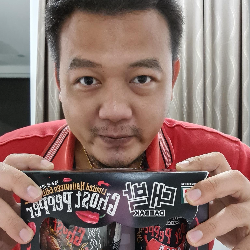Developers working in the fields of Graphics, Virtual Reality (VR), and Artificial Intelligence (AI) can bring significant improvements to web applications through the application of their unique skills and knowledge. Here’s how they leverage fundamental concepts to enhance web applications:
Graphics
Real-Time Rendering Techniques:
Improvement: Implementing techniques like WebGL can allow for dynamic, high-quality graphics directly in the browser, enhancing user interfaces or providing interactive visualizations.
Example: Using
Three.js or
Babylon.js for 3D models, animations, and games in web contexts, making applications visually rich and interactive.
Shaders and Lighting:
Improvement: Custom shaders can optimize performance and visual quality for specific use cases, like detailed product views or immersive backgrounds.
Example: GLSL shaders for creating special effects or improving how materials are rendered in a web-based 3D environment.
Performance Optimization:
Improvement: Techniques like level-of-detail (LOD) rendering can be used to ensure that graphics perform well across different devices, enhancing user experience by reducing load times.
Example: Adaptive texture loading based on device capabilities or user proximity in a VR web experience.
WebGL and WebGPU:
Improvement: These technologies allow for GPU-accelerated graphics in browsers, significantly boosting the quality and performance of graphical applications.
Example: Using WebGPU for more complex computations in graphics, leading to better performance in VR or AR web applications.
Virtual Reality (VR)
WebVR/WebXR APIs:
Improvement: These APIs enable VR experiences directly in the browser, making VR accessible without additional software or hardware beyond basic VR headsets.
Example: Creating immersive VR tours or educational simulations that run in the browser, enhancing engagement and learning.
Spatial Audio:
Improvement: Implementing 3D audio in VR web applications can significantly enhance the immersion, making the experience more realistic.
Example: Using Web Audio API to create soundscapes that respond to the user's head movements in VR.
User Interaction Design for VR:
Improvement: Designing intuitive VR interactions can make web applications more engaging, reducing the learning curve for users.
Example: Gesture-based controls or hand tracking for interacting with web content in VR environments.
Scene Management and Optimization:
Improvement: Efficient scene management can handle complex environments without overwhelming the browser, ensuring smooth VR experiences.
Example: Implementing culling techniques or using A-Frame for simpler scene setups in VR web apps.
Artificial Intelligence (AI)
Machine Learning for Personalization:
Improvement: AI can analyze user behavior to personalize content or UI, making web applications more relevant and user-friendly.
Example: Recommending content or adjusting UI based on user preferences or past interactions, using
TensorFlow.js in the browser.
Natural Language Processing (NLP):
Improvement: Enhancing user interaction through chatbots or voice commands, making navigation or information retrieval more intuitive.
Example: Implementing a conversational interface for customer support or information search within a web application.
Predictive Analytics:
Improvement: Predict user actions or system needs to preload content or adjust application behavior, enhancing responsiveness.
Example: Predictive loading of pages or resources based on user navigation patterns.
Computer Vision for Web AR:
Improvement: Enhance web applications with AR features, like image recognition or augmented overlays, without needing native apps.
Example: Using
TensorFlow.js for real-time object detection in the browser to overlay AR content.
AI-Driven Performance Optimization:
Improvement: AI can analyze application performance data to suggest or automatically implement code optimizations.
Example: Automatically adjusting content delivery or rendering based on real-time user and device metrics.
Behavioral Analysis for UX:
Improvement: Use AI to understand user interaction patterns, leading to UI/UX improvements that are data-driven.
Example: Heatmaps or user flow analysis to redesign interfaces for better usability.
Integration and Synergy
AI for VR Content Creation:
Improvement: AI can assist in creating or enhancing VR content dynamically based on user data or interactions, making VR experiences more tailored.
Example: Procedural generation of VR environments or characters based on user preferences or previous interactions.
Graphics Optimization with AI:
Improvement: AI algorithms can optimize graphics rendering by predicting what needs to be rendered in detail or can be simplified.
Example: Using neural networks to decide on the fly which textures or models need high fidelity based on user focus or movement.
AI-Enhanced Security Features:
Improvement: In VR or graphics-intensive web applications, AI can detect unusual behavior or potential security threats, enhancing protection.
Example: Real-time analysis of user patterns in VR to detect and prevent unauthorized access or usage.
Automated Testing and Debugging:
Improvement: AI can automate testing for graphics rendering or VR interactions, ensuring applications work across various configurations.
Example: Using AI to simulate different VR scenarios or detect graphical glitches that might not be visible to the human eye.
By combining these fundamentals, developers can create web applications that not only look and feel advanced but also interact with users in more intuitive, personalized, and efficient ways, significantly improving the overall user experience.


